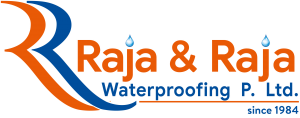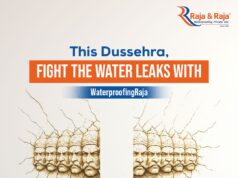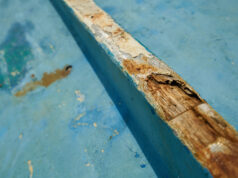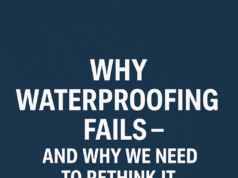In this post, we would learn about the different types of reinforcements available for Waterproofing Coatings in India, further we will also discover their benefits, drawbacks and special instruction using Reinforcement in any coatings.
Q: Should we reinforce the Waterproofing Coatings?
Q: For which all areas the Waterproofing coatings be reinforced?
– if to reinforced, which material to select?
– What thickness to maintain?
Q: What are the various reinforcing material available in market?
Answer to all these question is right here further.
Reinforcemnts in Waterproofing Coatings are of various types:
- Mesh
- Fleece
- Non-Wovens
- Geotextile
These different types of reinforcement (Mesh, Flees, Non-Woven and Geotextile) are used for various purposed isolately or in combined form:
Fibre Mesh:
Mesh is usually a term used for special combed fibres arranged in a templatised manner.
Most mesh are of glass fibres and are either interweaved or spot welded. Mesh works better with cementitious coating.
Special care is to be taken into consideration that, the same are coated with Alkali resistance latex commonly shared as AR coated.
Ideally there are no mesh required in cementitious coatings.
If so, are you using it in Wet area Waterproofing?
But still when it need to be used, it can be anything between 30 to 45gsm for 1.0kg per sqm to 1.5kg per sqm specs.
If you increase the thickness, kindly work on the relative consumption to optimise the tensile strengths.
Fleece:
Fleece are the knit of the polyester.
They are mainly of two types Spunbound and Spunlaced.
Spunbound has high-density weaves and usually has single-axis stretchability.
Spunlaced usually have less density and have bi-axial stretchability.
Ideally to be embedded in Waterbased or Solvent based mastic coatings to obtain the additional tensile strength.
NonWoven:
Most non-woven fleece is made up of polypropylene using melt-blown technique.
Polypropylene fibres are melted and rolled in the long-panelled fabrics.
These are to be used as per the desired need.
These are further classified as follows:
1. Needle-Punched
2. Non-Laminated – hydrophilic
3. Laminated – hydrophobic
Needle punches are used to gain additional flexibility, strength and bonding between the layers.
Non-Laminated non-wovens are being used at the base in many pre-formed membranes to give basic strength during wet/hot applications.
Laminated non-wovens are being used as the protective layer of coatings and are usually applied/installed using adhesives.
Geotextile:
Geo word indicates it is for the ground.
Geotextiles are usually made up of fibres either weaved or non-weaved.
They are ideally used as the separating media between two layers.
Market usually embed the mesh in the base coat.
My personal preference is to add the mesh over the primer and further undertake your coating application; At the junctions, corners additionally reinforce as required.
Care to be taken embedding this reinforcement in coating:
- Ideally to be used only at the areas where we need high tensile strengths.
Ex.: Wall and Floor corners, junctions, Terminations, Downturns or Upturns, Drain holes etc. - Embedding is a skill and has to be done properly.
Improper termination of the reinforcement can defeat the entire purpose.
As it allows an entry for water to percolate inside the system and fail the system. - Embedding the reinforcement shall be done from one side of application.
Entrapped air shall be removed before the termination of the coating. - Quality supervision is must while installing the reinforcement in the mesh.
- Prefer using needle punch reinforcement for the easy material followthrough and embed; also the removal of entrapped air.
- If using reinforcement is a roll form, unroll and prep for release of initial pre-set inertia.
- Pre-wetted the reinforcement with the material to be embedded in.
- Sampling mock-up of the material compatibility to be verified before using with pre-experienced products and to be reviewed for 28 days dipped in water and outside; for the compatibility of the mesh and the material.
- Ensure taking out the pin holes from the embedded coating using spike roller.
Benefits of using Reinforcement in coating:
- Add the thickness to the coating (high build coatings)
- Adds barrier capacity due to the addition of layer in the system
- Reinforces the tensile strength or Reduces the elasticity of the coating
- Brings more crack-bridging ability to coating.
Setbacks of using Reinforcement in coating:
- Installation complexity is a biggest setback.
- Substrate and system compatibility plays very cruicial role in success of reinforcement addition
- Higher consumption of material and labour and thus cost.
- Damages or Punctures are not easy to be patched up.
- If the parent surface movement exceeds the threshold, the stress may crack the coating along with reinformcement and in some cases may entirely delaminate the reinforcement from coating.
These thoughts are explicitly expressed by the author from their experience.
You can reach out to author for correction, update, addition, collaboration on following email: [email protected]



